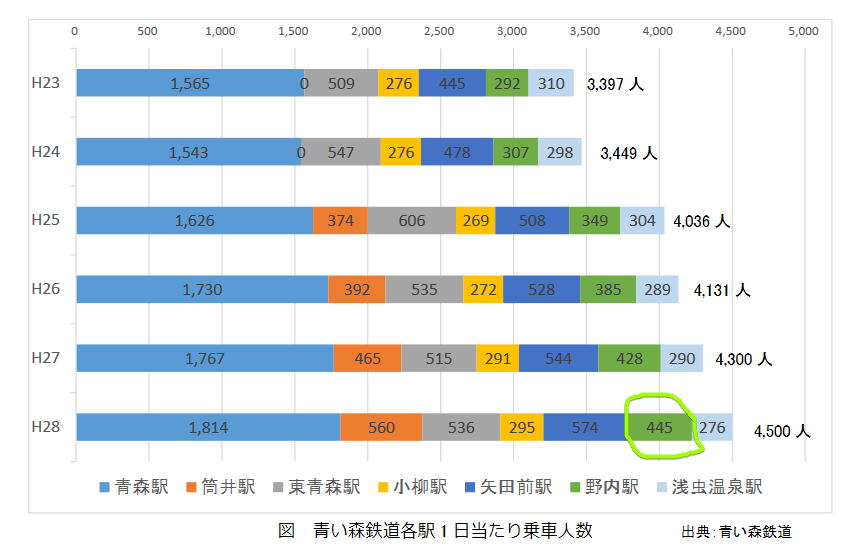
2024-09-08
Typically, the number of passengers at local stations in non-metropolitan areas of Japan has been decreasing over the years. As an example, Aizu-Wakamatsu Station (会津若松駅) in Fukushima Prefecture went from 3595 daily boardings in 1999 to 2434 daily boardings in 2019. Some major reasons for this include the general aging of the country and the depopulation of Japan's smaller cities as young people move to the major metro areas.
The decreasing user base combined with the ongoing maintenance costs has led many local stations to be closed over the years. This is most visible in Hokkaido where the population density was never high to begin with and the maintenance costs are higher due to the snow/cold winters. It's not uncommon to read about Hokkaido stations with <1 daily boardings. 恩根内駅, 初野駅, 愛山駅, 滝ノ上駅, and 中ノ沢駅, all in Hokkaido, were closed in the most recent batch in 2024. However, this problem of decreasing population density is something that affects the entire country and many local train lines/stations are heavily in the red and thus at risk of closure. The problem is only generally expected to get worse over time.
However, I recently learned that Nonai Station (野内駅) in Aomori City managed to buck this trend. In 2004, it had 30 daily boardings.

But in 2016, it had 445 daily boardings

Consdering the context of slow but steady decline of local lines, this is really a miraculous 14x increase in the passenger base. The things that allowed Nonai Station to buck the trend was two-fold:

青森市総合都市交通戦略 (Aomori City Combined City Transportation Strategy). pg 99
As a result, the station gained a large number of daily school commuters from the nearby high school. The number of students attending Aomori Technical High School was 569 in 2023-2024, so a large number of them are clearly using the train to get to and from school. The cost of moving the station will likey pay for itself with the increase in passengers (some quick estimates: 500mil JPY to move the station, 5000 yen per month for the student commuter pass * 500 students per month -> 30 mil JPY per year. Pays for itself in 16 years) and it undeniably makes life easier for all the students who now use it to commute to school.
This kind of coordinated movement was likely only possible because the station's ownership changed from JR East (based on Tokyo) to Aomori Prefecture as part of the opening of the Shinkansen to Aomori City (when opening Shinkansen lines, JR group companies can choose to divest non-profitable local lines that run in parallel). Since the railroad company, Aoimori Railway Line, is now owned by the Prefecture, it was probably much easier to align the interests of the railroad company and the local city/citizens. Aoimori Railway Line replicated its success by opening a branch new station, Tsutsui Station (筒井駅), near another high school. There are also hundreds of daily users in that station.
This whole strategy is honestly quite impressive and it feels like a great use of the existing railroad resources. The lines themselves are not changed and it only involves building new stations. It'll be really interesting to see if other places will attempt and succeed at replicating this sort of strategy. It could make life more convenient for local residents and preserve local lines.
Any error corrections or comments can be made by sending me a pull request.